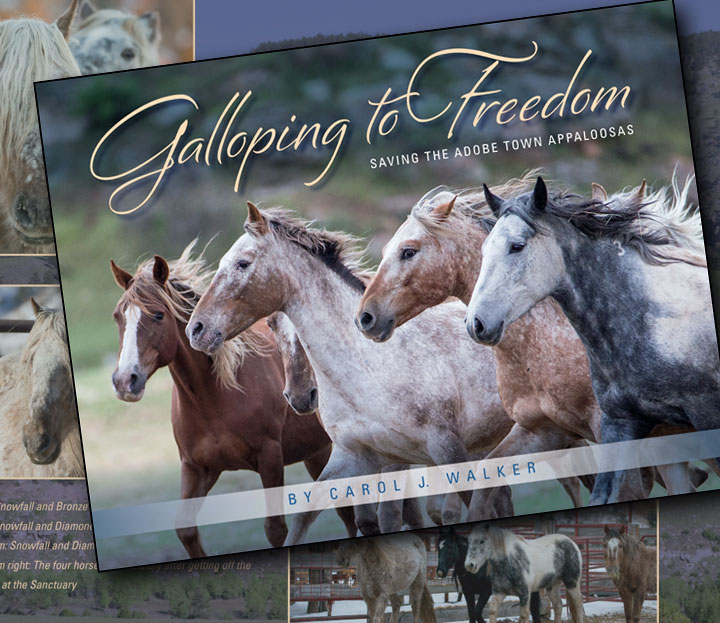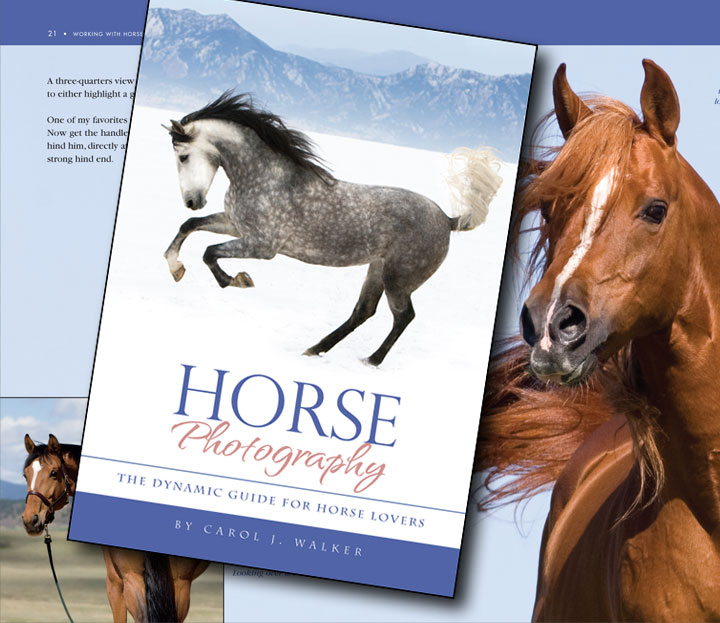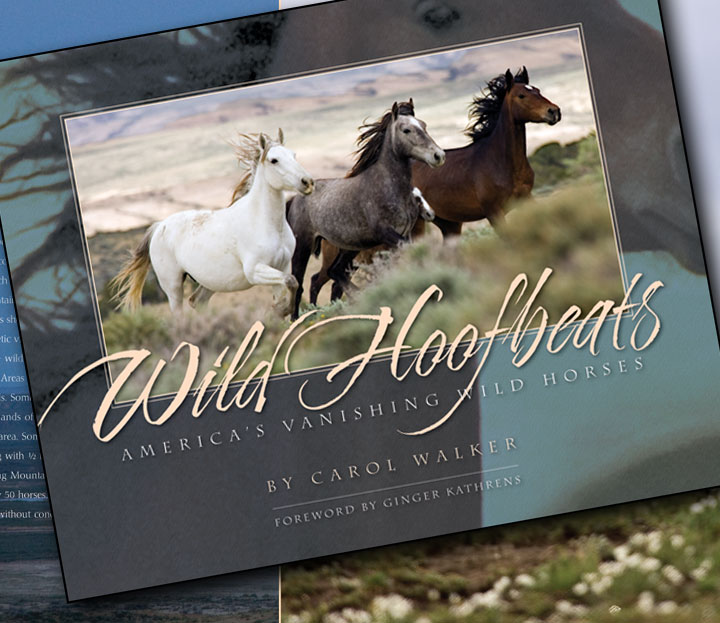
Wild Hoofbeats
January 25, 2018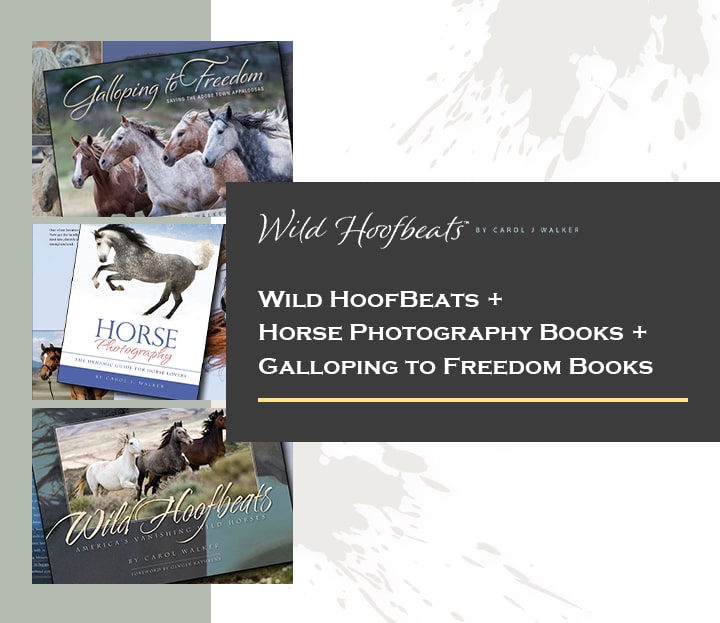
Book Package Deals
July 1, 2021Galloping to Freedom
$39.95
Galloping to Freedom: Saving the Adobe Town Appaloosas features over 200 of Carol’s full color photographs in perfect binding, equally suitable for coffee table browsers, fine art photography admirers, or the libraries of serious equine science students. Appendices offer information on wild horse advocacy efforts, Cana Projects, and the Black Hills Wild Horse Sanctuary.
Carol Walker’s Galloping to Freedom will find a sanctuary in your heart
During the infamously heartbreaking BLM 2014 Checkerboard Roundup in Wyoming, a chance encounter between a regal wild stallion and acclaimed photographer Carol Walker changes both of their lives forever. The new photo documentary book, Galloping to Freedom: Saving the Adobe Town Appaloosas, is the result of that encounter. In this, the third book for this multiple-award winning author and artist, Walker’s evocative photographs and poignant prose document the story of rescuing the stallion she named Bronze Warrior and his band of mares and offspring from different BLM holding facilities and reuniting them in a place where they could live out their lives together, safe and undisturbed. Like every satisfying animal story, the venture is not without difficulties and sorrows, but ultimately, this is a tale of triumph and joy. And even better: It is true.
Aged horses such as Bronze Warrior (22 when he is captured) usually are the last to be adopted and therefore are the most likely to spend their remaining years in cramped BLM pens without their families. Especially concerned for this gallant stallion and his band, Walker reaches out to Manda Kalimian of the Cana Projects for help; the two share Thoreau’s belief that “in wildness is the preservation of the world.” Together, these two staunch and vocal wild horse advocates win over even the BLM bureaucracy to the effort. Susan Watt, of the Black Hills Wild Horse Sanctuary, is the third “Reunion Team” member.
The story is, by turns, nerve-wracking and frustrating, thrilling and surprising, charming, heart-warming and delightful. The captivating photographs likewise offer a widely ranging emotional journey, from touching to powerful. In combination, the images and story build to a victorious resolution. By journey’s end, one is struck by the horses’ timeless elegance and dignity, whether enduring a brutal holding facility or soaring in spirited freedom. One is equally moved by the dogged perseverance of the humans in the story.
So, Reader, beware: This book might change your own life forever.
Galloping to Freedom: Saving the Adobe Town Appaloosas features over 200 of Carol’s full color photographs in perfect binding, equally suitable for coffee table browsers, fine art photography admirers, or the libraries of serious equine science students. Appendices offer information on wild horse advocacy efforts, Cana Projects, and the Black Hills Wild Horse Sanctuary.
137 pages hard cover with dust jacket, large format full color book, including over two hundred of Carol’s incredibly moving wild horse photos. With Foreword by Steve Israel, Member of Congress.
Only $39.95 US + s&h
Also available in several of our package deals! Click HERE to view our Adobe Town packages
50% of all proceeds will go to Cana Projects
Horsetalk Magazine
Reviewed by Robin Marshall
Review Dates: July 12, 2016
by Carol J Walker
Hardcover, 144pp Painted Hills Publishing
Available from Amazon and from Painted Hills Publishing.
Carol Walker’s work is always beautiful – a visual feast for the horse enthusiast. And in this, her latest work, she shines a light on the struggle faced today by wild horses in the Americas.
One small family group of at-risk horses is the subject of Galloping to Freedom, but the trials of these horses is representative of thousands more across the plains of the US.
Walker has photographed wild horses for several years. The family of a striking spotted stallion from the famous Adobe Town herd caught her eye, and it is the story of this horse, whom she named Bronze Warrior, captured from the wild at the age of 22, that this book follows.
From the “Checkerboard Wild Horse Roundup” in Wyoming in 2014, Walker finds and follows Bronze Warrior and several members of his family herd, working to reunite them from holding facilities in Colorado and Nevada, to the Black Hills Wild Horse Sanctuary in South Dakota. Thanks to the many images captured of this group, BLM staff were able to find the other horses from the band.
Galloping to Freedom illustrates the story of these horses, reunited thanks to the perseverance of many determined and caring individuals.
From thousands of images, the hundreds in this book show wild horses in their natural environment and in captivity, and will prove fascinating for students of equine behavior.
Galloping to Freedom will appeal not only to those who are at the grass roots of the battle to save wild horses, but also to those who want to know more about the fate of this true icon of the American West.
Carol Walker’s passion for photography started at an early age, with animals as her favorite subjects. She studied literature and photography as an undergraduate at Smith College, and continued her education in photography after graduating, studying portraiture and nature photography. For the past 30 years, she has photographed wildlife all over the world.
In 2000, Carol started her business, Living Images by Carol Walker, specializing in horse photography. Carol’s images illuminate the relationship between horses and their people, as well showcase the beauty of horses with her stunning images of horses at liberty. She teaches equine photography workshops for amateur photographers and markets her fine art prints from her website as well as in several locations on the Front Range of Colorado. Carol’s artwork and books have been honored with numerous awards.
Eleven years ago, Carol began photographing wild horses. As she followed several herds in Wyoming, Colorado and Montana, she became aware of how precarious their situation on public lands has become. Since then, she has dedicated herself to educating people with her photographs and stories about the wild horses. She is one of the leading advocates for keeping America’s wild horses wild and free on public lands. Proceeds from the sales of Carol s artwork and books fund her efforts.
Feathered Quill Book Reviews
Reviewed by: Ellen Feld
Review Date: February 13, 2016
Stunning photography and a compelling story combine to make Galloping to Freedom a must-have book for horse lovers and indeed, a must-have for anybody who loves animals. Award-winning equine photographer and author Carol Walker has written/photographed several books about horses, focusing most of her energies on the plight of wild horses. The first book of hers that I read/reviewed, Horse Photography: The Dynamic Guide for Horse Lovers, gave me a new understanding of how to photograph my own horses. Her beautiful photos along with easy instructions had me hooked. Many horse enthusiasts likely know her/her work from the Cloud Foundation calendars (showcasing the stallion ‘Cloud’ and the horses of the Pryor Mountain Herd), which she has photographed, donating the proceeds to the Cloud Foundation. Her newest book, Galloping to Freedom, continues the amazing work Ms. Walker has done to help the wild horses of the American West. Galloping to Freedom follows the plight of wild horses from several areas of Wyoming, including the Great Divide Basin. In the fall of 2014, the BLM (Bureau of Land Management) gave in to pressure from cattle owners to remove wild horses from publically, and some privately, owned land. Despite ‘allegedly binding legislation,’ the Checkerboard Roundup went on. Stallions, mares, and young foals were chased into holding pens by helicopter. Once captured, these wild horses, who form very strong bonds with their families, were separated by gender and age, and forced into confining pens with strangers. Fights broke out, injuries occurred and foals were put in dangerous situations as they tried to stay with their mothers.
Carol Walker was very familiar with a particularly band of horses that had been captured, those known as the ‘Adobe Town Appaloosas.’ She had previously photographed them and had even named the herd sire – Bronze Warrior. When Ms. Walker heard of the roundup, she immediately set to work with other wild horse advocates to purchase those horses, and bring them to the Black Hills Wild Horse Sanctuary where they could be reunited. Ms. Walker expertly captures all of this with her camera lens, from the roundup to the eventual release of Bronze Warrior’s family at the sanctuary.
The cover image on Galloping to Freedom was enough to draw me into this book and once I started reading through the pages, I couldn’t look away. Ms. Walker has a talent for capturing the heart and soul of the horses she photographs and the images in this book are no exception. The story will make you angry with the politicians who bow to pressure from cattle interests to rid the land of our country’s greatest treasures, and how those horses, ripped away from the only family they have ever known, frequently suffer. Lest you think, however, that the book is only about the misfortunes, take heart because there are plenty of beautiful photographs of wild horses enjoying life at the sanctuary. Thank you, Ms. Walker, for keeping the plight of America’s wild horses in front of the public. Quill says: A book every horse lover should read – you’ll be mesmerized by the photos and story and quite thankful that there are people like Carol Walker working diligently to save the magnificent wild horses.
Page Turners Reviews
If you love horses, or just love to see stunning photography of what true wild freedom looks like, then Galloping Freedom is a must have. It would make an absolutely brilliant coffee table book, and a gift for any horse enthusiast.My only problem with this book was the smell. When I opened it had a very strong printers ink (almost oil paint) smell to it. As a person with a high sensitivity to odors, this was a strong turn off to me. But of course this in no way reflects on Ms. Walker and her wonderful work with the horses, or the lovely writing/photography in this book. So, I couldn’t in all good conscience use that as a part of my rating system, but it did need to be noted.
http://reviewsbypageturners.blogspot.com/2015/12/review-galloping-to-freedom-saving.html
The Boulder Weekly
In the name of freedom: Managing wild horses in the once wild West
Carol Walker of Longmont can tell a wild horse by the look in its eyes, an expression of the untamed vastness of the once wild West. For Walker, the author of Galloping to Freedom, a photographic documentation of the plight of wild horses in Wyoming, there is a sense of sadness in that recognition. While she knows wild when she sees it, she also knows that it is tenuous and fleeting.
“In this day and age we are taking more and more of our wild places away to develop, frack and graze the land, all of which is destroying it,” Walker says. “People don’t always realize that there is an impact on human beings that is terrible because we need those wild places as a part of our souls — as a part of our lives and our wellbeing and our planet. People talk about wild horses as a symbol of the West but really they are a part of our land, a part of our planet and a part of our wildlife.”
No longer an open frontier, the West is a patchwork of private and public land that cannot support growing horse populations in tandem with cattle grazing and other industrial uses. Wild horse populations grow at 20 percent a year due to natural reproduction and the release of feral horses onto public lands. When there are too many horses, the Bureau of Land Management (BLM) removes them in roundup events, using helicopters to corral herds into long-term holding facilities.
Walker’s book documents the Checkerboard Roundup of 2014 and follows the journey of a few horses that end up in a Wyoming sanctuary against all odds. Their rescue is due to the fight by a dedicated group of wild horse advocates, including Walker and her organization Cana Projects, a nonprofit dedicated to ensuring the sustainable use of western land and resources through advocacy programs.
But the story of these horses really begins 64 years before the roundup, in 1945, with the passing of the Taylor Grazing Act that established the BLM as the administrator of public lands. For more than three decades, the BLM existed as a land management department, a link between corporate cattle interests and the federal inventory of land, providing below market rate grazing leases to ranchers.
By the 1970s wild horse populations declined due to competition with livestock. In response to public outcry and activism, Congress passed the Wild and
Free-Roaming Horses and Burros Act (WFRHBA) in 1971, charging the BLM with the responsibility of studying, managing and protecting the wild horse and burro populations.
This role pits the BLM against itself — asking the agency to both lease the land to ranchers and to protect the wild animals that already roamed on it. Since WFRHBA went into effect, the BLM has struggled to maintain a balance between these roles.
In January 2011, the Rocks Springs Grazing Association (RSGA), a southern Wyoming livestock group, filed an injunction to force the BLM to remove wild horses from private grazing lands adjacent to federal horse management areas.
In accordance with RSGA requests, in April 2013 the BLM signed a consent decree calling for the removal of all horses within that area to be removed, not just from private lands, but from public lands, too. Termed the Checkerboard Roundup, the event would have huge implications for the management of public lands in the West. Not only did it call into question the BLM’s ability to steward the horses they are charged with protecting, but it set a new precedent for the removal of horses from public land.
In order to stop the roundup, Walker and the Cana Projects filed a temporary restraining order and emergency injunction that was denied by the courts. Walker felt powerless to protest the roundup. Unable to stop what was about to happen, she readied herself to do what she could; photograph and document the imminent loss of freedom and life in hope of increasing awareness.
“I first saw the horses in the book before they were rounded up,” Walker says. “They were just spending time in their families grazing, playing and doing what wild horses do, totally unaware of what was going to happen to them. It broke my heart because I knew what it is like in captivity. I knew that they would lose their wildness.”
Over the next week of the roundup, the BLM used helicopters and automobiles to remove 1,263 wild horses from the Great Divide Basin, Salt Wells Creek and Adobe Town Management Areas in Wyoming. Fourteen horses were killed in the process.
Walker followed the horses as they traveled from Wyoming to their temporary holding facility in Cañon City, Colorado.
The horses were supposed to be ready for adoption a few weeks after the roundup, but because the facility was understaffed the horses were not turned around for sale until February 2015 — more than four months after they entered captivity.
By March, 76 of the Checkerboard Roundup horses had died in captivity. Some of the remaining horses were sold, but most remain in holding facilities like that in Cañon City. As of April 2015, there were approximately 48,000 confined wild horses and burros held and managed by the BLM across the country.
But Walker secured a home for 22 horses from the Checkerboard Roundup — an 11,000-acre sanctuary in Wyoming. Her book tells the story of the return of these horses to their natural habitat and points to the broken system that perpetuates the loss of wildness.
Last month, Walker and Cana Projects filed a lawsuit challenging the Checkerboard Roundup — arguing that the BLM and RSGA illegally removed horses from public land and did not allow for a sufficient public opinion process. The suit is filed with the 10th District Court of Appeals and will likely be heard in Denver in 2016.
With 49,209 horses and burros currently roaming 31 million acres of public lands, barely outnumbering those in captivity, this case not only draws attention to the magnitude of the problem, but to the cost and methodology used to mitigate wild horse populations.
Keeping horses in captivity is expensive — Walker says that the BLM uses almost half of its budget on keeping the horses in captivity. There is no question that it would be less expensive to control the population than to confine them, but there is political pressure to get the horses off of the land now.
In order to address the high costs of long-term holding facilities, the BLM recently commissioned several research studies looking into the sterilization of horses by way of spaying mares. While this may be an effective and low-cost alternative, the process comes at great risk to the horses. The chances of sickness and death after the invasive surgery is high as horses are unguarded against infection in the wild.
The Porcine Zona Pellucida (PZP), a contraceptive vaccine, is considered to be a humane alternative to sterilization by many wild horse advocates. In March 2015, Walker met with BLM Director Neil Kornze to discuss logistical pathways to pursue the use of PZP. But according to Walker, he was disinterested, citing the amount of field work required to vaccinate the mares every two years.
“I’m really happy that the horses in the book are back together and that they are at the sanctuary, but, as you can see, this is only a solution for some horses,” Walker says. “There are not enough sanctuaries to take them all. There just aren’t. We need to be able to keep them out on the land. Something big needs to change for that to happen — new land agreements, new methodologies for controlling population size — I don’t know how that is going to happen, but I am determined to hang in there and do what I can.”
Link to Article:
http://www.boulderweekly.com/article-15410-in-the-name-of-freed.html#commAjax
Constantly Moving the Bookmark
GALLOPING TO FREEDOM – SAVING THE ADOBE TOWN APPALOOSAS by Carol J. Walker.
Sitting at my keyboard contemplating this review I already know that my vocabulary is too limited so I am going to run out of adjectives to describe how AMAZING this rescue effort was and how absolutely BEAUTIFUL and STUNNING Ms. Walker’s photography is in retelling the adventure.
This book is a both a tribute and a fund-raiser to help save America’s wild horses. When I requested this book it was because I wanted to enjoy the photographs included – and believe me – they are INCREDIBLE! There is no doubt as to Ms. Walker’s talent as a wildlife photographer.
More importantly she gives the reader a touching and often heart wrenching saga of the “wild and beautiful horses whose spirit and grace touched her so deeply”. Witnessing first hand through the lens of her cameras the ongoing round-ups of these horses made her wonder about the justification of “herd management”; taking these beautiful wild horses away from the habitat, often separating family groupings – was this really in their best interest? Her recollection of witnessing “Rocky” (so name because of his ability to elude capture even when helicopters were involved) as he managed to escape yet, thereby, loosing his “family” begins this book and was the catalyst in her decision to do something to try to help these horses maintain their habitat or move to a safer one rather than be rounded up, sold and often killed in the process.
The contrast in her photographs of the horse running wild and then the same horses corralled is heart stopping. Happily, some of the older horses (10+) were eligible to go to the Black Hills Sanctuary and because of Ms. Walker’s cataloguing photographs some family groups of horses were able to stay together. A success, albeit a minor one. The first transfer of horses from the corrals to the sanctuary was a success.
The horses remaining were beginning to endure some difficult conditions including mares birthing in crowded pens, where there was not only the imminent danger of the foals being hurt but as each foal was born it meant that mother and foal needed to wait until being able to be moved. Sadly, not all the foals survived.
Of course, as the horses were set free at the sanctuary it presented Ms. Walker with so many more photo opportunities and I must say seeing these horses behave as they would in the wild through her pictures was a real treat. The pictures of the horses posturing and challenging for dominance in their new home were AMAZING!
The sanctuary consisted of hundreds of acres of wild open pasture. There the horses would be protected and yet still be “free”. As some of the horses were scheduled to be moved to the “rescue pasture” … the first step in their transition in the sanctuary a very happy event occurred – a new foal was born.
As Ms. Walker describes it, “I climbed up onto to the flat part of the truck so that I could take photos without disrupting the group, and watched as the other sanctuary horses in the pasture next door came running down the hill and over to the fence to see the new arrival. They seemed fascinated by the new baby. A while later, Sid, a rescued horse with a big personality, came loping up to the fence to join the other, as if to say, ‘No one told me about the baby!’”
It seemed an apt christening and a sort of blessing for the endeavor. It was a girl.
This book is nothing short of beautiful from the story to the publication (coffee table size and format, high quality glossy pages) and of course, the photography. If you or anyone you know has a soft spot in their heart for the majesty of horses you or they will adore this book, plus it helps a good cause. Win/win as far as I’m concerned.
Although these horses were successfully moved and are now protected in their freedom many more wild horses are facing roundups. I was not aware of this issue and in Ms. Walker’s afterword she clarifies it in glaring terms. “In September and October of 2014, the Bureau of Land management removed 1263 wild horses from the Great Divide Basin, Salt Wells Creek and Adobe Town Herd Management Areas. This action was motivated by a lawsuit instigated by the influential Rock Springs Grazing Association whose goal is to eradicate wild horses from both private and public land in Wyoming. This group’s pressure on the BLM is unrelenting.”
In the back of the book is a list of organizations on the front lines of the campaigns to save wild horses and burros. To find out more about these wild horses you can visit www.wildhoofbeats.com and even show your support by putting their badge on your blog or website.
* I received this book for review from the author
via Wordslinger in exchange for an honest review *
The Midwest Book Review
Margaret’s Bookshelf
December 2015
Galloping to Freedom: Saving the Adobe Town Appaloosas
Carol J. Walker, author & illustrator
Elizabeth Testa, editor
Painted Hills Publishing
9780981793610, $39.95, 144pp, www.amazon.com
Synopsis: “Galloping to Freedom: Reuniting the Adobe Town Appaloosas” photographically showcases the playful, protective, elegant, affectionate, loyal, and beautiful horses of Wyoming’s famed Adobe Town herd. Their stunning images are caught in the wild by award-winning photographer Carol Walker. Especially remarkable is the snow capped stallion that Walker thinks of as Bronze Warrior and his band of Appaloosa-marked mares and offspring. But their freedom was to be curtailed. In the fall of 2014, the Adobe Town horses were rounded up, their bands divided. Bronze Warrior and his sons were shipped to Colorado, their mares to a holding facility in Wyoming, and their young sent to Carson City, Nevada. Moved by the horse’s strong family bonds in the wild, Walker joined with other advocates to intercede. “Galloping to Freedom” is the story captured in Walker s signature dramatic images of searching out, gathering together, and ultimately reuniting Bronze Warrior s extended family at the Black Hills Wild Horse Sanctuary. “Galloping to Freedom: Reuniting the Adobe Town Appaloosas” will engage your heart and forever change your view of America s wild horses.
Critique: Simply stated, “Galloping to Freedom: Reuniting the Adobe Town Appaloosas” should be considered a “must read” for every equine enthusiast and horse lover in the country. The photography is outstanding, the succinct captions and commentaries informed and informative, the entire book a masterpiece. “Galloping to Freedom” should be a part of every community and academic library collection for the enduring benefit and pleasure of their patrons — and perhaps inspire similar efforts in other parts of the country.
Review can be found online here:
http://www.midwestbookreview.com/rbw/dec_15.htm#margaret
Recommended by the US Review of Books
Galloping to Freedom: Saving the Adobe Town Appaloosas
by Carol J. Walker
Painted Hills Publishing
reviewed by Barbara Bamberger Scott December 2015
“These horses did not stand a chance. Their freedom was going to be measured in mere days, not even weeks, and certainly not years as it should have been.”
Adobe Town is a region of nearly 500,000 acres in Wyoming where wild horses and burros have traditionally been allowed to roam free. However, due to land “checkerboarding” (mixing private and public acreage) in the area, ranching associations were able to use legal pressure in 2014 to clear out large numbers of these herds, as impinging on private grazing sites. Carol J. Walker, photographer and writer, chronicles the fate of some of these beautiful animals as they are driven from their range and forced into small holding pens. The facts presented are depressing: horses die sooner and younger in captivity. Currently about 48,000 horses and burros are in government holding areas. About the same number are free in the wilderness, roaming 31 million acres over seven states. As Walker laments, it would seem that there is surely enough land for all these animals to run free without damaging private interests.
Walker and her friends hope to find ways to liberate the captured animals. Her large, glossy color photographs highlight her plaint to all Americans, to remember and advocate for these magnificent beasts. Some are the striking Appaloosa coloring so dear to our hearts from western movies. In close-ups and vast panoramas, she reveals the horses as both personal—with emotive faces and attitudes—and wild—galloping across vast western wilderness like veritable symbols of American freedom. Her written account is equally moving. She describes in detail following certain special horses—Bronze Warrior, Snowfall, and Diamond Girl—from freedom to containment. With stories and pictures, Galloping to Freedom could be influential in helping to return these wild American animals to their natural habitat.
Review is online here:
http://www.theusreview.com/reviews/Galloping-to-Freedom-by-Carol-J-Walker.html#.Vm8hTb_tgwA
FOR IMMEDIATE RELEASE
11/11/2015
Carol Walker
303-823-6642
www.WildHoofbeats.com
Carol Walker’s Galloping to Freedom will find a sanctuary in your heart
During the infamously heartbreaking BLM 2014 Checkerboard Wild Horse Roundup in Wyoming, a chance encounter between a regal stallion and the acclaimed photographer Carol Walker changes both of their lives forever. The new photo documentary book, Galloping to Freedom: Saving the Adobe Town Appaloosas, is the result of that encounter. In this, the fourth book for this multiple-award winning author and artist, Walker’s evocative photographs and poignant prose document the story of rescuing the stallion she named Bronze Warrior and his band of mares and offspring from different BLM holding facilities and reuniting them in a place where they could live out their lives together, safe and undisturbed. Like every satisfying animal story, the venture is not without difficulties and sorrows, but ultimately, this is a tale of triumph and joy. And even better: It is true.
Aged horses such as Bronze Warrior (captured at 22) usually are the last to be adopted and therefore are the most likely to spend their remaining years in cramped BLM pens without their families. Especially concerned for this gallant stallion and his band, Walker reaches out to Manda Kalimian of the Cana Projects for help; the two share Thoreau’s belief that “in wildness is the preservation of the world.” Together, these two staunch and vocal wild horse advocates win over even the BLM bureaucracy to the effort. Susan Watt, of the Black Hills Wild Horse Sanctuary, is the third “Reunion Team” member.
The story is, by turns, nerve-wracking and frustrating, thrilling and surprising, charming, heart-warming and delightful. The captivating photographs likewise offer a widely ranging emotional journey, from touching to powerful. In combination, the images and story build to a victorious resolution. By journey’s end, one is struck by the horses’ timeless elegance and dignity, whether enduring a brutal holding facility or soaring in spirited freedom. One is equally moved by the dogged perseverance of the humans teaming up to preserve these iconic animals.
So, Reader, beware: This book is likely to change your own life forever.
Galloping to Freedom: Saving the Adobe Town Appaloosas features 144 pages of full color photographs in hardcover, equally suitable for coffee table browsers, fine art photography admirers, or the libraries of serious equine science students. The foreword is written by New York State 3rd Congressional District representative Steve Israel. Appendices offer information on wild horse advocacy efforts, Cana Projects, and the Black Hills Wild Horse Sanctuary. The book is available for purchase HERE. 50% of the proceeds go to Cana Projects, a 501(c)3 charity which supports the belief that people can “change the world by performing one small act of advocacy or miracle at a time”.
Carol Walker is a professional fine arts photographer with a thriving business in private commissions as well as a large portfolio of dynamic, captivating wild horse images. She is one of the leading advocates for keeping America’s wild horses wild and free on U.S. public lands. Proceeds from the sales of Carol’s artwork and books fund her efforts. Each year, Carol produces a calendar of her images to benefit the Wild Horse Freedom Federation.
Meet Carol in person and pick up inscribed copies of Galloping to Freedom at the Equus Film Festival in New York City, November 20-22, where she will be participating in an artist and author signing during the event. The Festival also includes a panel discussion on Mustangs. Manda Kalimian, of Cana Projects, will be present as well.
Cover image available here
Interviews/Articles
Interview with Feathered Quill Book Awards March 7, 2016:
http://www.featheredquill.com/reviews/interviews/walker_int.shtml
February 2016 Edition of Popular Photography Magazine
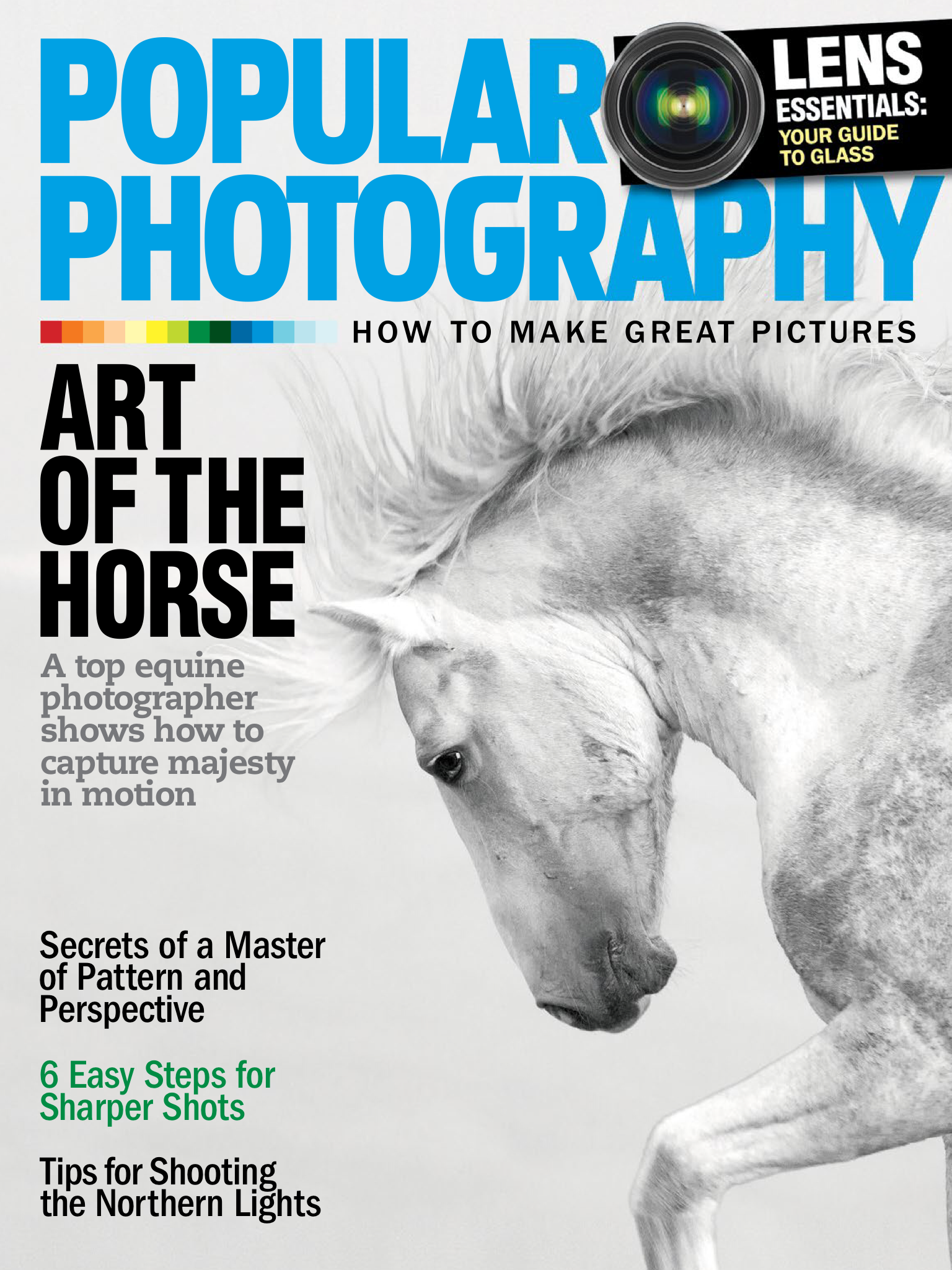
http://www.popphoto.com/carol-walkers-tips-for-taking-majestic-horse-photographs
Boulder Weekly Interview – “In the Name of Freedom” December 23, 2015 by Sarah Haas
http://www.boulderweekly.com/boulderganic/in-the-name-of-freedom/#commAjax
Radio interview of Carol Walker with Denver/Boulder KGNU:
http://news.kgnu.org/2015/11/galloping-to-freedom-saving-the-adobe-town-appaloosas/
2016 Best Book Awards
11/20/2016
First Place: Animals, Pets: Narrative Non-Fiction
http://www.usabooknews.com/2016awardpressrelease.html
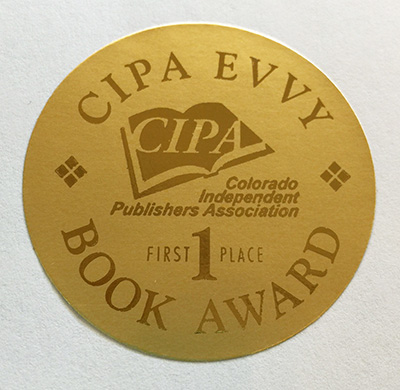
8/20/16
Gold/ 1st Place EVVY Award from Colorado Independent Publishers Association
for Best Coffee Table Book
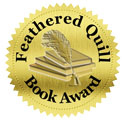
1.28.2016
Gold/1st Place award in the 2016 Feathered Quill Book Awards Program for the Best Animal/Adult Category
Silver/2nd Place award in the 2016 Feathered Quill Book Awards Program Best Informational Category
Winner “We Love Animals” Award sponsored by Feathered Quill
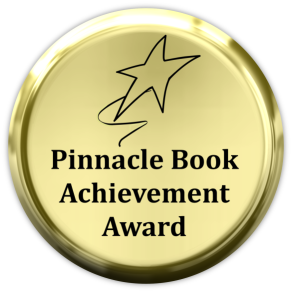
4-12-2016
Gold/1st Place award in the 2016 Pinnacle Book Achievement Awards for Best Book in Photography Category

4-12-2016
Silver Winner in Nautilus Book Awards in the Photography and Art Category
and also won Best of Self-Published Books in the 2015 Season
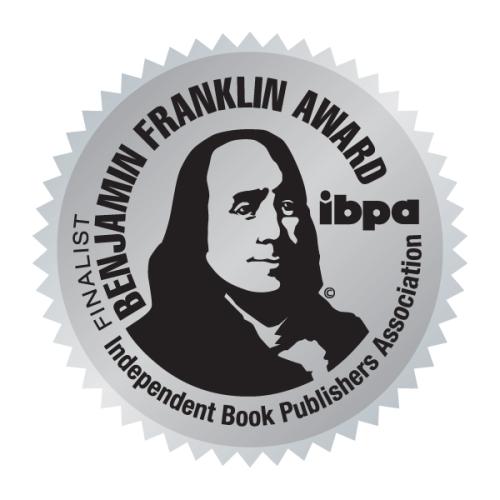
4-13-2016
IBPA Benjamin Franklin Awards Silver Winner in Animals/Pets Category

4-13-2016
Independent Publisher Books Awards Silver Medalist for the Animals/Pets Category
Book Signings in Colorado for Galloping to Freedom
Thursday, May 12, 2016 at the Longmont Public Library 7:00-8:00 pm
Talk on Wild Horses and book signing for Galloping to Freedom
Carol Walker will give a talk about wild horses and the challenges facing them at the Longmont Public Library, free to the public.
Wednesday, November 11, 2015 from 6:00-7:00 pm
Workshop on Self-Publishing and a book signing at Main Street Fine Art in Evergreen
Carol Walker will talk about options and essentials for self-publishing and will answer questions and provide handouts with resources. There will be time ot purchase Carol’s new book Galloping to Freedom, and get it signed.
Main Street Fine Art Gallery
28186 Highway 74, Evergreen, CO
303-670-7222
November 11, 5:30 p.m.
Please RSVP: www.EvergreenArtists.org
Thursday November 12, 2015 from 6:30- 8:30 pm
University of Denver
Carol will be presenting a class on the wild horses of Adobe Town, featuring a slideshow set to music, lecture about wild horses and their behavior, social structure, and challenges facing them. Carol will also talk about photographing wild horses and tips for visiting and photographing them. There will be time at the end of the lecture to purchase her new book, Galloping to Freedom, and get copies signed.
University of Denver, Denver, CO
Cost is $35 To sign up: Call 303-871-2291 or visit www.universitycollege.du.edu/enrichment
Saturday November 14, 2015 at 2-4 pm
Boulder Arts and Crafts Gallery on the Pearl Street Mall in Boulder, Colorado
Book Signing – Carol will be available to sign books, and Carol has her artwork at the Gallery as well.
Boulder Arts and Crafts Gallery
1421 Pearl Street, Boulder, CO 80302
303-443-3683
www.BoulderArtsandCrafts.com
No reservations necessary
Friday, December 11, 2015 from 5-8 pm
Outnumbered Gallery in Littleton, Colorado
Talk at 6, books signings before and after Carol will do a presentation on wild horses with a slideshow set to music of her images, and discuss the issues facing wild horses today.
Outnumbered Gallery
5654 S. Prince St. Unit A, Littleton, CO
720-389-9085
www.OutnumberedGallery.com
Sunday, January 10, 2016 at 2:00 – 4:00 pm
Boulder Book Store on the Pearl Street Mall in Boulder, Colorado
Book signing – Carol will be signing books
1107 Pearl Street, Boulder, CO
303-447-2074
www.boulderbookstore.net
Book Signing in New York City at the Equus Film Festival
November 20-21, 2015
Ukrainian National Home, above the Ukrainian Restaurant, 140 2nd Ave, NYC, NY 10003
Pop up Gallery and Author Book Signings at the Equus Film Festival 12-6 pm
Meet Carol in person and pick up inscribed copies of Galloping to Freedom at the Equus Film Festival in New York City, where she will be participating in an artist and author signing during the event. The Festival also includes a panel discussion on Mustangs, and Carol Walker is on the panel Saturday evening.
Click here to learn more.
SAVE ON BOOK PACKAGE DEALS!
Galloping to Freedom + Wild Hoofbeats 3rd Edition + Horse Photography 2nd Edition
Only $75.88 + s&h (Normally $94.85)
Galloping to Freedom + Wild Hoofbeats 3rd Edition
Only $59.42 + s&h (Normally $69.90)
Galloping to Freedom + Horse Photography 2nd Edition
Only $54.42 + s&h (Normally $64.95)
Wild Hoofbeats 3rd Edition & Horse Photography 2nd Edition
$46.67 US + s&h (SAVE 15%)
Related products
-
Book Package Deals
$46.67 – $115.84 Select options This product has multiple variants. The options may be chosen on the product page

